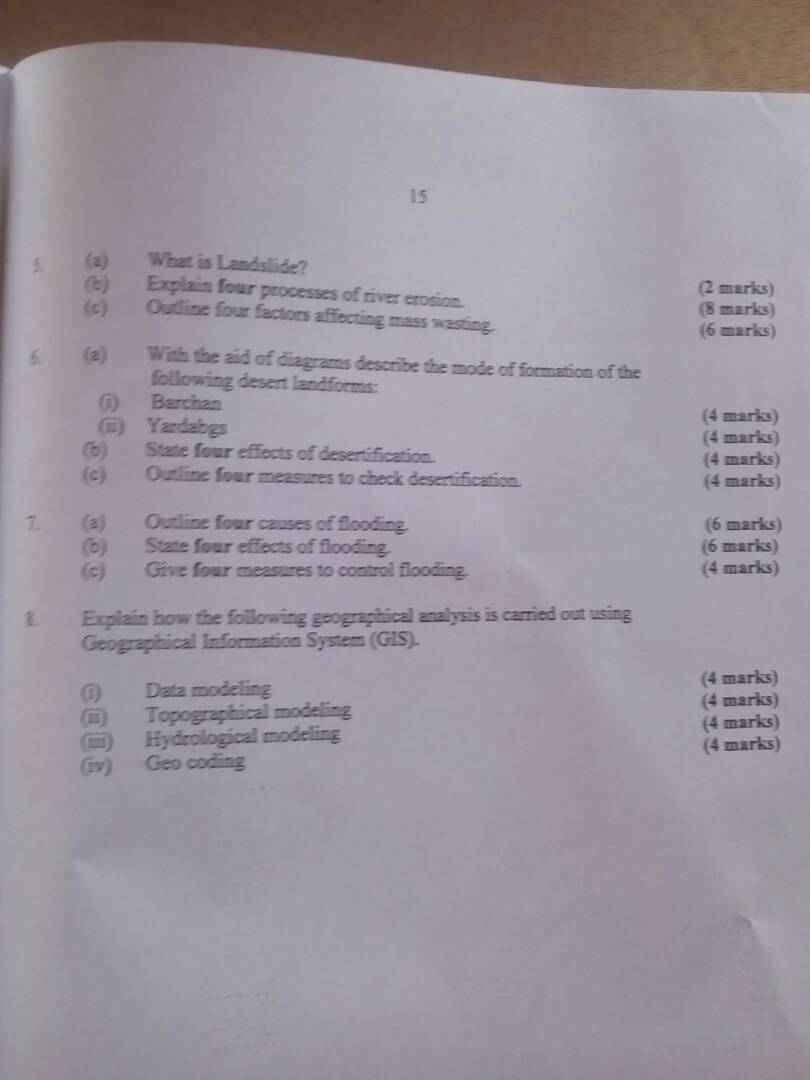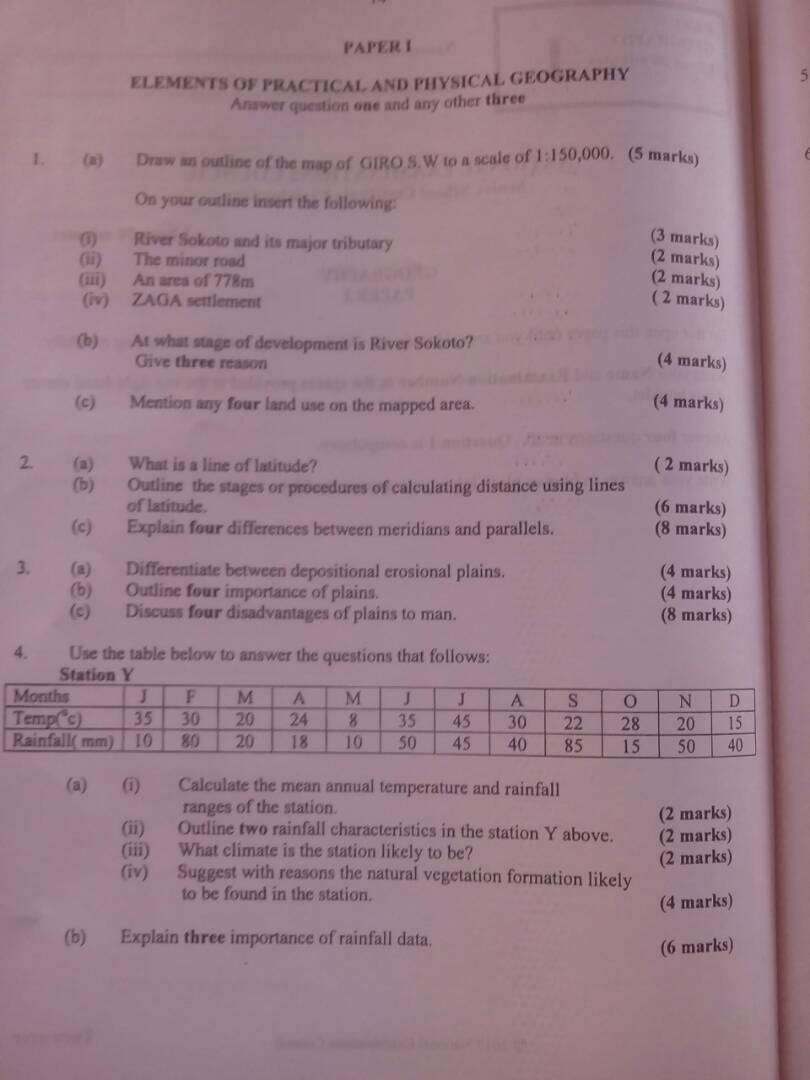WWW.SOLUTIONFANS.COM - MASTER OF ALL EXAM RUNS
geography – obj
1 Bbaabaabcc
11 aeabddabba
21 bbbdeddced
31 cbacaaceee
41 cbeadeacdd
51 eDceCCCBAD
Geography
================================
2 a)
Line of latitude a notional circle of constant latitude on the earth’ s surface parallel to the equator .
2 b )
degrees of latitude into minutes and seconds . Each degree contains 60 minutes, while each minute contains 60 seconds . Simply divide by 60 the distance a degree covers to find the distance a minute covers , and divide by 60 again to find the distance a second covers.
2 c)
tabulate
i )
– Parallels are also known as latitudes
– Meridians are also known as longitudes
ii )
– The first parallel is the equator . It is latitude 0 .
– Greenwich is the prime meridian ( 0 ° )
iii )
– Parallels don ’ t intersect.
– All meridians intersect at two places ; the North Pole and the South Pole.
iv )
– Values range from 0 ( the Equator ) to 90 ( the north and south poles )
– Values for longitude range from 0 ( the Prime Meridian ) to 180 degrees
v )
– Letters N and S are used to denote the location
– Letters E or W are used to represent direction
================================
7 a)
i ) river overflow
ii ) ice and snow melts
iii ) strong winds in coastal lands
iv ) dam breaking
7 b )
i ) loss of human life
ii ) destruction of crops
iii ) loss of livestock
iv ) deterioration of health conditions
7 c)
i ) planting vegetation to retain extra water
ii ) construction of floodways
iii ) terracing hillsides to slow flow downhole
5 a)
A landslide is the movement of rock , earth, or debris down a sloped section of land .
5 b )
i ) Abrasion or corrasion – This is when large pieces of bedload material wear away the river banks and bed.
ii ) Attrition – This is when the bed load itself is eroded when sediment particles knock against the bed or each other and break , becoming more rounded and smaller .
iii ) Hydraulic Action – This is when the force of water erodes softer rock .
iv ) Solution or corrosion – This is when acidic water erodes rock .
5 c)
i ) Slope
– gravity provides the energy to move the materials .
– rapid movements ( e. g . landslide , slumping ) are commonly found on steep slopes while slow movements ( e. g . soil creep ) are found on gentle slopes .
ii ) Water
– rainwater acts as a lubricant to weathered materials .
– rainwater adds weight to weathered materials .
iii ) Rock structure
– joints dipping downslope usually assists landslides , rockfalls , rockslide , rock creep . . . . . etc
iv ) Vegetation
– lack of vegetation cover to hold the loose particles .
3a)
DEPOSITIONAL PLAIN:
it is formed by the deposition of materials brought by various agents of transportation such as rivers, wind, waves, and glaciers.
EROSIONAL PLAIN:
Erosional plains that have been leveled by various agents of denudation such as running water, rivers, wind and glacier which wear out the rugged surface and smoothens them.
3b)
i)Plains facilitate humans to fulfil their needs of food and shelter.
ii)The smooth surface of plains makes transportation of goods easy for humans.
iii)Most of the plains in world have been changed to biggest trade centers of world due to their richness of minerals and raw agricultural materials.
iv)plains are called the source of human’s needs, civilization and culture. And world’s 80% population live on plains.
3c)
i)It is easily exposed to disasters
ii)The chances of flood are higher in plains than on mountains
iii)More diseases are found a plain areas than other areas
iv)Plains are a disadvantage as Plants like coffee can’t grow They have only one kind of soil They are prone to natural disasters
825 total views, 1 views today
also don't forget to leave a Reply, we would very MUCH appreciate Your Comments On This Post Below. Thanks!





How will jamb 2018 b ,, hope it will be like 2017 bcox my sis was admitted and she subscribe here this yr.
It will be better than 2017
Today was so fun. Thanks Sir. May God bless u
Thanks boss. U are actually doing ur best.